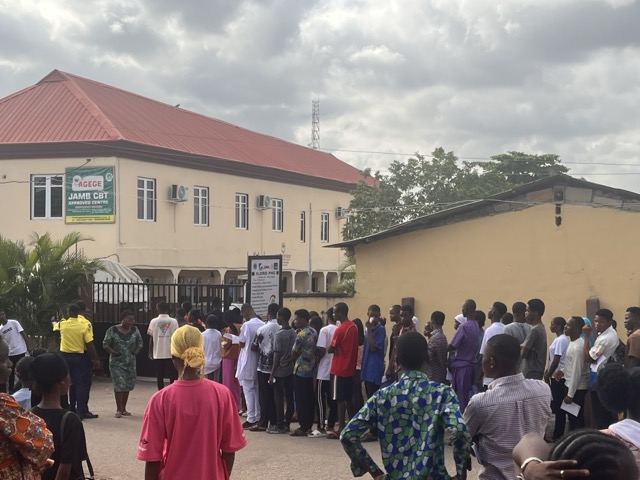'It's not over: HIV ravaging older adults'
Many South Africans no longer fear dying from HIV/Aids, some even believing the virus no longer poses a significant threat.
Health minister Aaron Motsoaledi has warned that this perception is contributing to a troubling rise in new infections, particularly among older adults.
Motsoaledi’s concerns follow the release of a new study from Wits University’s Sydney Brenner Institute for Molecular Bioscience (SBIMB), which revealed alarming HIV trends. One of these is that infections are increasing among South Africans aged 50 and above.
The minister also pointed out that older men who engage in sexual relationships with younger women were the main transmitters of the virus. This is a pattern linked to the “sugar daddy” or “blesser” phenomenon.
“HIV is driven in our country by older men sleeping with younger girls. That we’ve known for ages because when we check the peak of HIV infection, it peaks at younger girls of a particular age group, about 18 and 20.
“But you don’t find a similar peak in the boys of the same age group, meaning that somebody else [outside their age group] is sleeping with them [girls]. It was found that older men have sex with younger girls. It is a socioeconomic situation, fuelling the sugar daddies practice,” Motsoaledi said in an interview with Sowetan.
He said while there is a special programme focused on men, government programmes have traditionally focused on younger women as victims, older men should also be seen as part of the problem.
“Older men are the ones giving girls and young women money to paint their nails; so it is a very big socioeconomic problem.”
Asked why older men were not using condoms, he said this was a new problem the country was encountering.
The minister also highlighted the role of HIV awareness campaigns in reducing the fear of the virus. In 2010, SA launched one of the world's largest HIV prevention and testing initiatives. He said people responded positively because the mortality rate from the virus was still high.
“There were funerals every day. People were dying, missing work and missing school,” Motsoaledi recalled.
He said that fear has since diminished, and some people even believe HIV is no longer a threat.
“So, people are no longer scared of HIV. That’s all I can say. There’s no more fear of death. In fact, there are some people believe HIV is gone,” Motsoaledi added.
A key factor in this shift is the introduction of the “one pill” treatment in 2012, which significantly reduced HIV-related deaths and the side effects associated with previous treatments.
“Compliance rates were high, and people started thinking HIV was under control, that the pandemic was over. That’s the problem we’re facing now; people aren’t using condoms anymore,” Motsoaledi said.
“We came with the concept of U=U, which we were even scared to talk about in public, that undetected means untransmittable.
“So, people started believing that, ‘no, but this pandemic is gone. Why should I suffer the inconvenience of using a condom’. Now, that is the new problem we are facing.”
The Wits University study, released last week, found that the rate of new HIV infections among people over 50 is 0.35 per 100 person-years, while the prevalence (how many people are living with HIV) in this age group is 25.6%.
Dr Luicer Olubayo, a researcher at SBIMB, explained that the study was prompted by the lack of focus on older adults in HIV research.
“Most HIV surveys target people aged 15 to 49. There's very little data on people older than that,” she said.
Olubayo also criticised SA’s sixth national HIV prevalence, incidence and behaviour survey, which reported a prevalence of only 14% among those aged 50-59, for its insufficient representation of people over 50.
“In countries like Botswana, HIV prevalence among people aged 50 and older has also increased significantly — from 24.6% in 2013 to 35.7% in 2021.
Researchers began collecting data between 2013 and 2017 and followed up with the same participants five years later. This first round of findings forms part of their long-term cohort study.
“We tracked how many people became infected during that time, and what risk factors contributed to infections in the 50+ group,” said Oubayo.
She highlighted common assumptions like the belief that older people are less sexually active as harmful and outdated.
Oubayo said low education levels, multiple sexual partners, ongoing stigma and gender dynamics are driving the risk.
“Many older women feel they can’t speak up about using condoms, especially in long-term relationships. Some even feel condoms are no longer necessary after years of commitment.
“There is a need to change the narrative. Older people are still at risk, and we must stop ignoring them in our fight against HIV. Intervention campaigns should also target older adults,” she said.
HIV/Aids activist and social commentator Nozibele Mayaba said the fight against the virus is losing steam, as people have become desensitised to the messaging that once shook the nation.
“There is a part of us that seems to have forgotten the devastation of HIV/Aids. With ARVs now widely available and people living longer, it feels like we have moved on, but the virus hasn’t. Add new diseases to the mix, and HIV is no longer seen as urgent.”
Mayaba said the challenge goes deeper than just awareness campaigns.
“There is still a lot that’s holding us back — patriarchy, infidelity, and the fact that most interventions focus mainly on women and children,” she said.
Mayaba pointed out how HIV testing and treatment often happen during routine health visits linked to pregnancy or birth control, leaving many men out of the loop.
“It’s part of government policy when a woman goes for contraception or antenatal care, she gets tested for HIV. That’s how many find out their status and start treatment. But when they return home, it’s the same man who might have other partners or even another family who tells them to stop taking their meds.
And because many of these women are financially dependent on these men, they listen,” Mayaba said.











